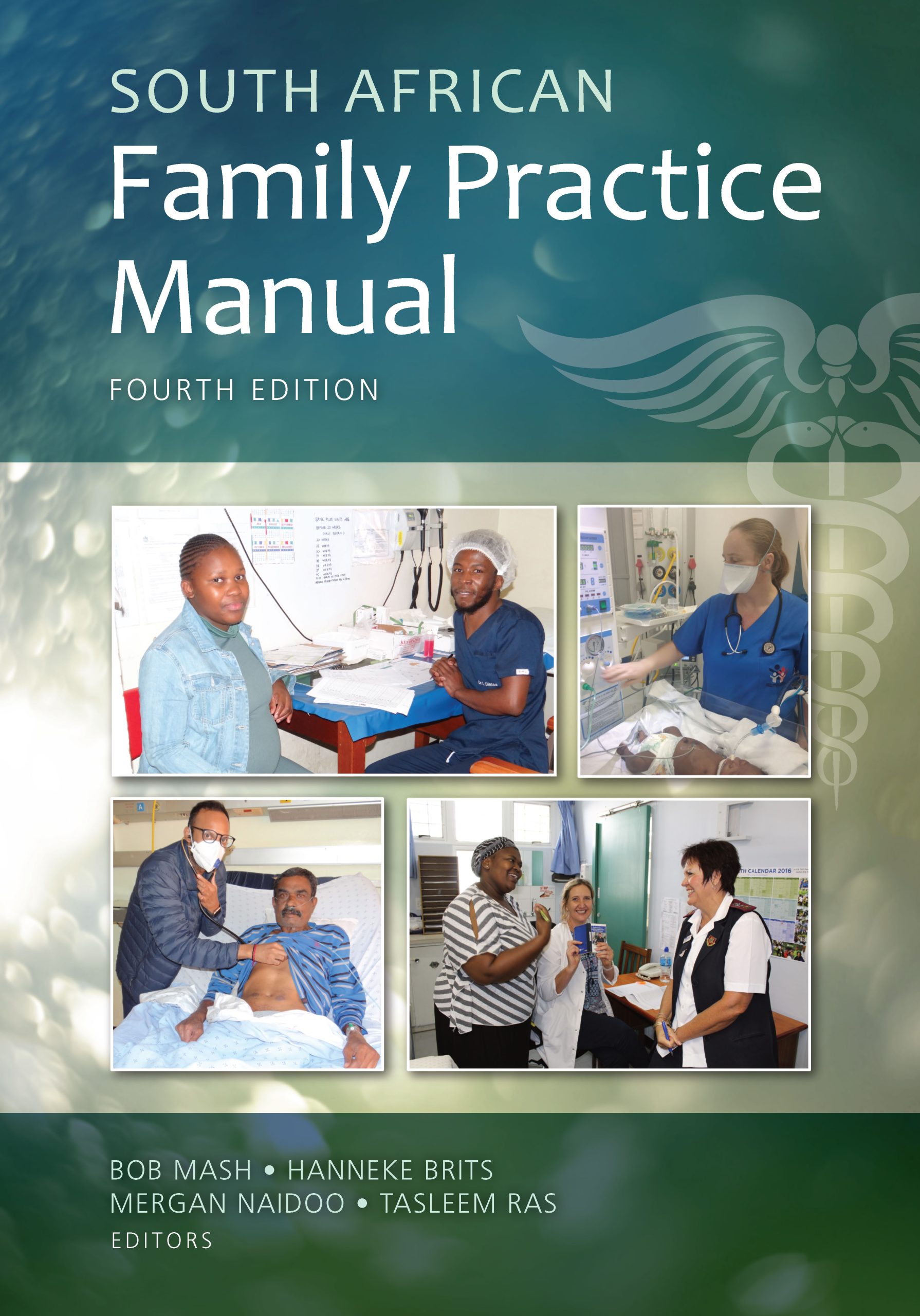25th Annual National Family Practitioners Congress
South African Family Practice Manual 4/E

Invitation:
The South African Academy of Family Physicians, Van Schaik Publishers and Van Schaik Books is pleased to invite you to join us for the book launch of the South African Family Practice Manual, 4th edition at the Gala Dinner event on Friday evening.
To celebrate the 25th Annual National Family Practitioner’s Congress, Van Schaik Publishers and Van Schaik Books are offering a discount of 20% to delegates who attend the conference on 18 -19th August 2023. Visit our stand to find out more about the Manual and the wide range of medical books from other publishers on sale.
Overview from the Editor, Prof. Tasleem Ras:
The SA Family Practice Manual, now in its fourth edition, was produced in response to a need for a textbook for undergraduate and postgraduate training in family medicine, and a quick reference text for busy clinicians in primary care and district hospitals. The layout and content were conceptualised specifically to aid the development of clinical skills relevant to family medicine. This latest update, which engaged academic departments of Family Medicine across the breadth of South Africa, additionally ensures that the latest clinical evidence is included. This fact is recognised by the College of Family Physicians of South Africa, which uses the Manual as a seminal reference text in their clinical examinations for the Fellowship and Higher Diploma in Family Medicine. The editorial team is very excited to see an expansion of the content to include a chapter on Point of Care Ultrasound (POCUS), chapters on rehabilitative and palliative care, and enhanced chapters on communication skills and clinical governance. We are confident that this edition is well aligned with the needs of the community of primary and district-level healthcare practitioners, as we strive collectively to positively impact the health of our communities.
Synopsis:
This fourth edition of the South African Family Practice Manual has been aligned with the current list of clinical skills in the curriculum for the training of family physicians. As such it is an essential resource for all registrars in family medicine training programmes and will be particularly useful for those preparing for the national Fellowship examination. The Manual will also be relevant to all those training or working as medical generalists in our context – medical officers, general practitioners, interns, medical students and associate clinicians.The Manual is a project of the South African Academy of Family Physicians and, as the user will see from the list of authors, it constitutes a collaborative project involving people from various Departments of Family Medicine in South Africa. It represents a distillation of the practical experience of a wide range of family physicians. This new edition has also expanded the editorial team to include Hanneke Brits (University of Free State), Mergan Naidoo (University of KwaZulu-Natal) and Tasleem Ras (University of Cape Town).The Manual is a practical text that focuses on “How to do …” that which is relevant to South African district health care. For this reason some of the skills are appropriate only for rural or district hospitals, while others are of more general applicability to primary care and general practice. The family physician in our context is trained to function in both of these settings and our intention is to include all possible tasks expected of him or her within the District Health Services. In addition to covering practical clinical skills, the text includes a number of teaching, research and management skills. Note, however, that we have avoided providing clinical management guidelines – not only are there a number of initiatives in this area, but the constantly evolving evidence base and changing recommendations are also better suited to a more responsive electronic format such as the Internet.In this fourth edition a number of sections have been completely revised, such as the material on community-orientated primary care and palliative care. An entirely new section on rehabilitation skills has been added and there are new chapters on skills such as taking a sexual history, emergency fasciotomy, amputations, ketamine anaesthesia, point of care ultrasound, and developing an effective learning environment.


![Family Physicians logo[transparent]](https://saafp.org/wp-content/uploads/2019/05/Family-Physicians-logotransparent-1200x266.png)